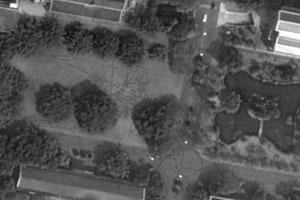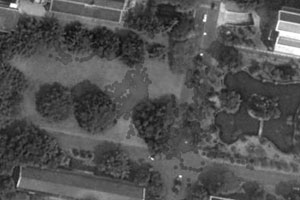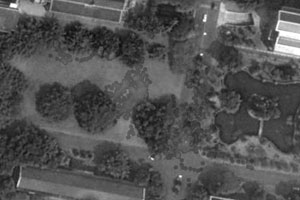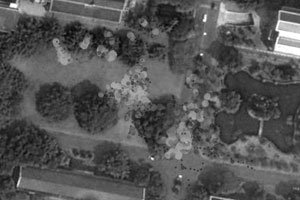Open Space 2.0




Hung-Lin Hsu and Cheng-I Tsai, Open Space 2.0. (© Hung-Lin Hsu and Cheng-I Tsai) Users' paths as recorded via cell-phone photos. (top left) All positions recorded are connected via lines. (top right) Every position recorded is represented as a circle. (bottom left) Every position recorded is represented as a circle with a small line attached indicating the direction in which the photographer is walking. (bottom right) Every position recorded is represented as a circle, the radius of which varies according to how fast the photographer is moving.
How does a collection of various people's photographs contribute to the story of a place? Is it possible to search for and interact with others who took a photograph where you currently are? We have developed a photo-based, place-centric Web 2.0 system called Open Space 2.0, which allows people to contribute their photos to a place/space. The system allows participants to assign photos to a specific mapped location, track their own or other participants' paths through a location and create co-experiences of space and place. We created two ways to participate in Open Space 2.0: "Leave Photo in Place" and "Leave Path in Place." For "Leave Photo in Place," users upload real-time photographs from their cell phones to Open Space 2.0; the photos are then automatically tagged and anchored to a specific map location in Open Space 2.0. The photographer can also review or retrieve other people's photos of the place where the photo was taken. This creates a co-experience of the space at different times and in different social contexts, ultimately creating links between people performing different activities at different times yet in the same place. For "Leave Path in Place," users' paths are recorded based on pictures they take using their phones. The paths are represented and depicted by diagrammatic icons. Through the diagram, the viewer of the Open Space 2.0 web site can understand the physical place in a broader context, which includes: when and where most people position themselves, where it is most popular to take a picture and what view most people find interesting.
Hung-Lin Hsu and Cheng-I Tsai
Web: sites.google.com/a/ialab.tw/open-space-2-0/Home/ARS; tw.youtube.com/watch?v=N55XnHRd2BA.
Updated 27 January 2010

